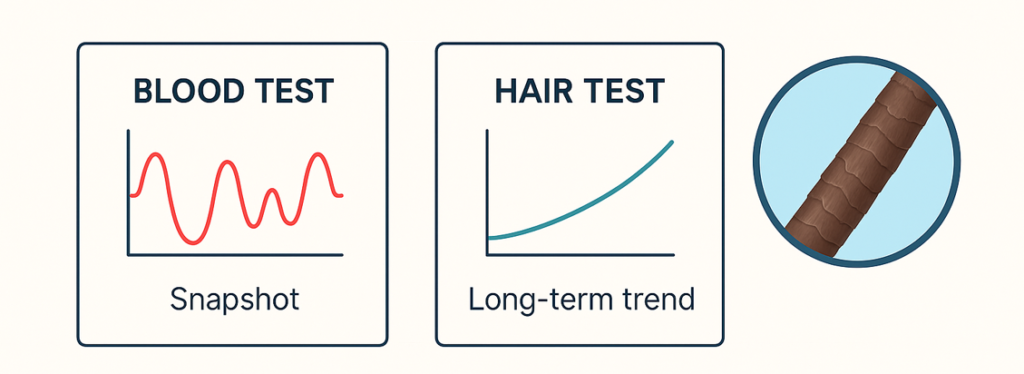A non-invasive, comprehensive test to unlock your body’s mineral balance, toxic metal exposure and reveal hidden health imbalances.
This test is not just about numbers—it’s about understanding your body’s internal chemistry to help you achieve optimal health.

Collect a Sample:
Using our easy-to-follow instructions, you collect a small sample of your hair at home. No needles, no clinic visits required.

Send to the Lab:
Once collected, you send your hair sample to our trusted lab for analysis.

Get Your Results:
After your sample is analyzed, you’ll receive a detailed report outlining your mineral levels, metabolic rate, and any toxic metal exposure. This data is then used to create a personalized health program.
While blood and urine tests offer momentary snapshots, hair reflects mineral patterns over weeks or even months—making it a more reliable indicator of long-term health.
-
📉 Blood tests fluctuate based on daily diet and stress—offering only a short-term view.
-
💧 Urine tests show what the body is excreting, not what it’s storing.
-
💡 Hair analysis captures stored minerals and toxins, providing a deeper, more stable look into your body’s internal environment.
Hair acts as a natural record of your body’s nutritional history, storing excess minerals and heavy metals that the body cannot eliminate elsewhere. HTMA uses this data to uncover hidden imbalances—often before symptoms appear.

- Nutritional Elements: Calcium, Magnesium, Sodium, Potassium, Iron, Copper, Manganese, Zinc, Chromium, Selenium, Phosphorus
- Toxic Metals: Arsenic, Mercury, Cadmium, Lead, Aluminum
- Additional Elements: Boron, Cobalt, Molybdenum, Lithium, Nickel
- Mineral Ratios: Calcium/Magnesium, Calcium/Potassium, Sodium/Magnesium, Sodium/Potassium, Zinc/Copper, Calcium/Phosphorous


Minerals are the “sparkplugs” of life.
They are needed for millions of enzymes as co-factors, facilitators, inhibitors and as part of the enzymes themselves. As a result, they have a great deal to do with the health of our bodies. By analyzing mineral imbalances in the body, one can learn a lot about the causes and correction of hundreds of common physical and mental health conditions.


